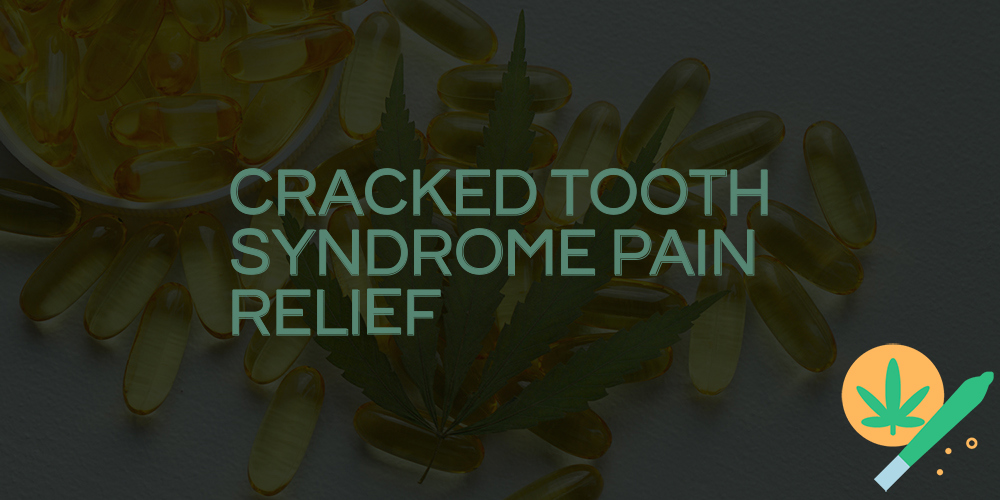Cracked Tooth Syndrome, a frequent dental illness that causes severe pain and discomfort, can have a significant negative influence on one’s quality of life Finding appropriate pain management for this syndrome is critical in order to reduce the suffering of people who have fractured teeth This article will look at many tactics and treatments that can bring much-needed relief from the anguish of broken tooth syndrome Join us as we delve into the field of pain management for fractured tooth syndrome, providing practical ideas and answers without relying on formulaic introductions or conclusions Let’s find out how to get efficient pain alleviation for this tooth problem

Causes, Symptoms, and Treatment of Cracked Tooth Syndrome
Cracked Tooth Syndrome (CTS) is a dental ailment that can be extremely uncomfortable and painful. Understanding the causes, symptoms, and treatment choices is critical for anyone suffering from this ailment. CTS occurs when a fracture extends from the chewing surface to the base of a tooth but does not totally divide the tooth into two parts. Because of the forces exerted when chewing, this condition is more common in molars, but it can affect any tooth in the mouth. The crack may be difficult to detect, making diagnosis impossible without a complete evaluation by a dental professional.
Cracked Tooth Syndrome can be caused by a variety of circumstances. One of the most common reasons is bruxism, or teeth grinding or clenching. Excessive pressure and repetitive action can damage the tooth structure and increase the probability of cracks over time. Furthermore, mouth trauma, such as a sports accident or biting down on a hard object, can result in broken teeth. Other causes that weaken the tooth structure, such as big fillings or root canals, can also make teeth more prone to cracks.
Cracked Tooth Syndrome symptoms differ from person to person, making diagnosis difficult. Pain during biting or chewing, sensitivity to hot or cold meals and beverages, and periodic discomfort that comes and goes are all common symptoms. Cracked teeth may not create any symptoms at first, but if left untreated, they can evolve to more serious problems. If you experience any of these symptoms or suspect you have a broken tooth, it is critical to get dental care as soon as possible to prevent further damage and relieve any pain or suffering.
Proven Methods for Relieving Cracked Tooth Syndrome Pain
Cracked Tooth Syndrome (CTS) can cause extreme pain and suffering, making eating, speaking, and even sleeping difficult. If you have this illness, finding appropriate pain-relieving treatments becomes a top priority. Fortunately, there are various tried-and-true strategies for providing relief and improving your quality of life.
Dental bonding or fillings are one of the most commonly used methods for reducing CTS pain. A tooth-colored resin material is applied to the afflicted tooth, which helps to seal the break and prevent additional damage. Dental bonding not only relieves pain but also improves the function and appearance of the tooth. It is a minimally invasive process that requires only one visit to your dentist.
The use of dental crowns is another treatment that has proven remarkable efficacy in alleviating CTS symptoms. Crowns are custom-made caps that fit over the broken tooth to protect and support it. They are often manufactured of materials that closely resemble natural teeth, such as porcelain or ceramic. Crowns help to distribute pressure during chewing, alleviating pain and avoiding future cracking by covering the broken tooth. Dental crowns are a long-term treatment that can improve your comfort and oral health.
Dental Procedures for Effective Relief from Cracked Tooth Syndrome, According to Experts
Cracked tooth syndrome is a frequent dental problem that can be extremely painful. It happens when a break in a tooth grows into the inner layers, potentially causing sensitivity, pain while chewing, and even infection. Fortunately, numerous dental procedures are available to provide relief and restore the impacted tooth’s functionality.
Dental bonding is one of the most common treatments for fractured tooth syndrome. A tooth-colored resin material is applied to the damaged tooth, which is subsequently molded and hardened using a specific light. Dental bonding not only relieves pain by supporting the damaged tooth, but it also restores the natural appearance of the tooth, making it a popular choice for many patients.
A dental crown is another excellent treatment for broken tooth syndrome. A custom-made cap is placed over the broken tooth to provide protection and stability. Dental crowns not only relieve pain and prevent additional damage, but they also strengthen and improve the appearance of the tooth. Crowns may now be created from a range of materials, including porcelain, metal, and even ceramic, ensuring a long-lasting and natural-looking solution for patients.
Natural Remedies and Home Care Tips to Relieve the Pain of Cracked Tooth Syndrome
If you have cracked tooth syndrome, there are various natural remedies and home care suggestions that can help relieve pain and improve recovery. While these cures are not a replacement for professional dental care, they can give temporary relief and help you maintain good oral health. Here are a few excellent home remedies to try:
1. Saltwater rinse: Swishing half a teaspoon of salt in a glass of warm water for 30 seconds will help reduce inflammation and destroy bacteria. This simple yet efficient solution might provide temporary relief from the pain of broken tooth syndrome.
2. Applying a cold compress to the affected area will help reduce swelling and numb the area, offering brief pain relief. Wrap a small cloth over a bag of ice or a cold pack and apply it to your cheek or jaw for 15 minutes at a time, several times a day.
3. Soft diet: Eating meals that are easy to chew can help to lessen strain on the broken tooth and discomfort. Until you can get professional dental care, stick to soft meals like mashed potatoes, yogurt, soups, and smoothies.
Remember that these home treatments are only meant to provide temporary relief and should not be used in place of a trip to the dentist. To prevent further damage and guarantee long-term oral health, cracked tooth syndrome necessitates skilled evaluation and treatment. Make an appointment with your dentist as soon as possible if you are suffering persistent pain or discomfort.
For those suffering from cracked tooth syndrome, obtaining appropriate pain alleviation is critical We can traverse the world of broken tooth syndrome and find the best pain management alternatives with careful deliberation and rigorous study We can provide a full grasp of this ailment and unparalleled insights for individuals seeking healing if we follow these criteria


